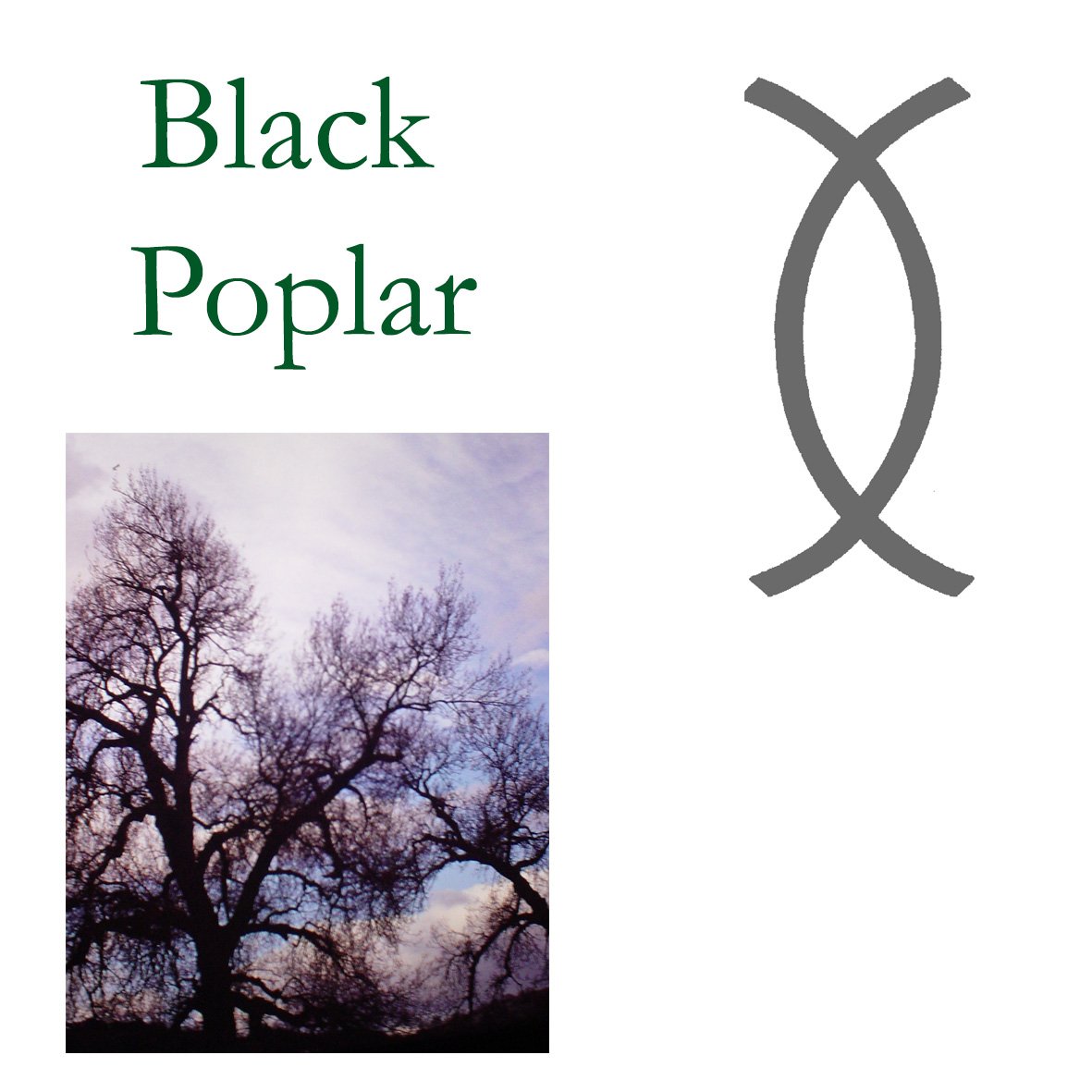BLACK POPLAR (Populus nigra)
Key: solidity
Most black poplars in Britain are hybrid varieties planted for rapid growth and effective windbreaks. The true native black poplar is one of the most endangered species in Britain today with only a thousand or so recorded. It can be identified by its birch-like leaves (hybrids have longer and more heart-shaped leaves), and by the rough, heavily burred trunk. Poplars cross-breed easily so exact identification can be difficult. Large male catkins appear in March, a deep red colour. Female trees produce a yellow catkin that elongates to become necklace-like fruit that release large amounts of cotton fine seeds in June. Black poplar is a large spreading tree with thick branches that can reach 100 feet (30 m).
The key for black poplar is solidity and security. It brings about an inner environment where peace can be established as a powerful state. Consciousness is raised to a level of detachment where the reality of situations are recognised from a spiritual, unifying viewpoint. At its finest, this essence brings in universal wisdom and a sense of complete security, at home even in the velvet depths of space.
The thymus gland is activated which strengthens the immune responses. Self-confidence and life-energy also increase. Chakras at the brow and throat are stimulated together with the 11th chakra which is located above the head quite some distance from the physical body. This allows fine perceptions and discernment to become integrated with normal behaviour patterns.
A link is created between the etheric body and the soul body. This brings spiritual energies closer towards the physical body increasing the sense of confidence and security. The Heart meridian is balanced, increasing the acceptance of love and forgiveness.
Signature: The deep roots are well known for their ability to search out water sources from a great distance.
Comment: Black poplar is so-named from the deep shadows cast by the knotted, burred and gnarled trunk. The commonly seen Lombardy poplar is an upright, narrow variety of black poplar thought to have originated in Asia and brought to Britain from northern Italy in 1758. The core energy to the native tree is quite similar, as is that of the hybrids, though superficial characteristics tend to modify the expressions of that energy: hybrids have a much lighter, airier feel, whilst Lombardy poplars are more densely foliated and have a powerful verticality that can be perceived as an energy flow far into the air above the tree. From a distance poplars are easy to identify as their large leaves silhouette separately against the sky giving a stippled effect.

